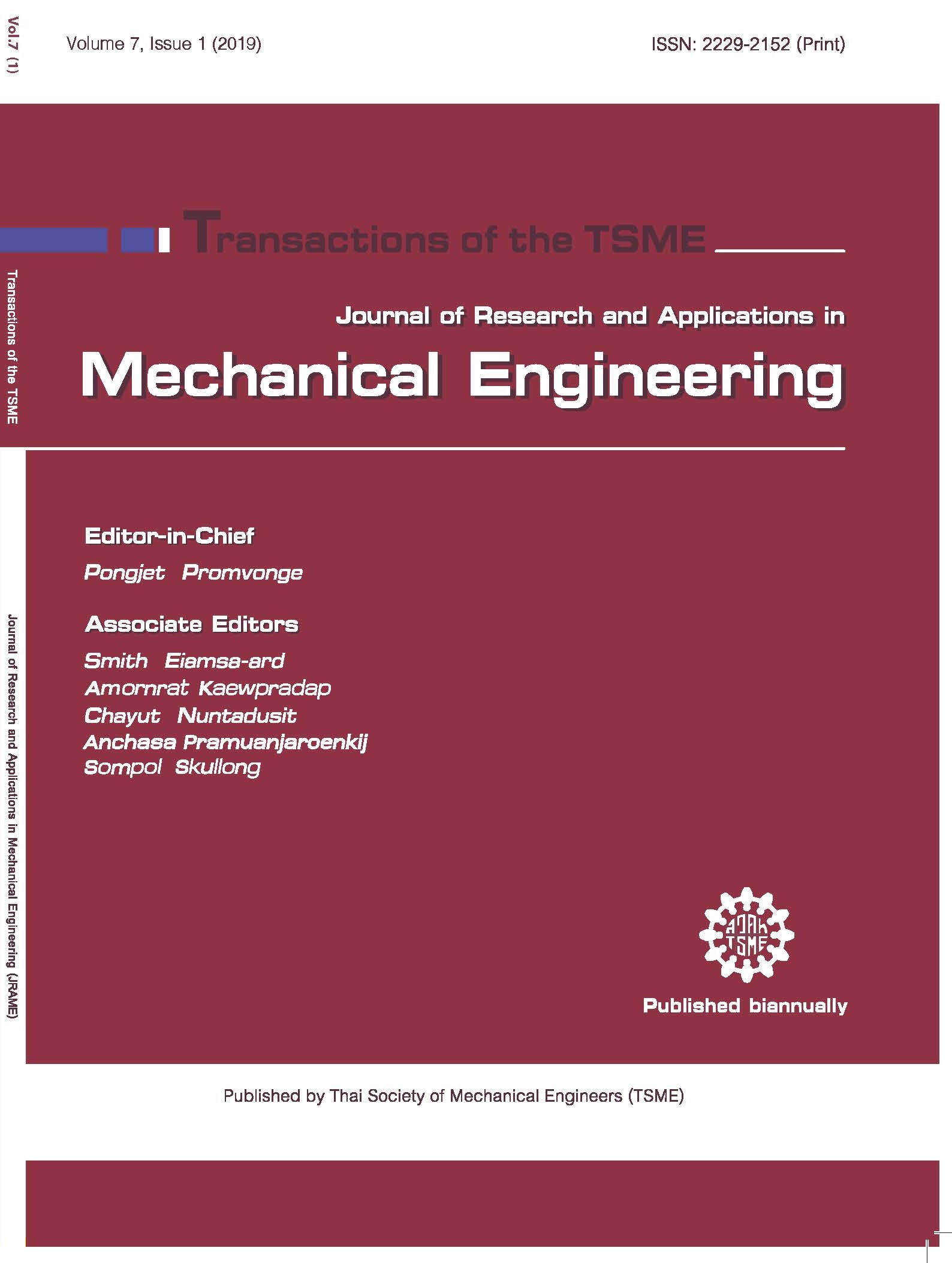A temperature distribution study in a heated bed component made from butyl rubber for dust mite allergy patients
Main Article Content
Abstract
Asthma is one of many respiratory tract diseases and can be caused by allergy symptoms. Allergy symptoms can be stimulated by many substances, dust mites are among them. Dust-mite feces can trick the allergy symptom in the patients. Allergy significantly affect quality of patient life. Environment surrounded the dust-mite allergy patients should be controlled to reduce a number of dust mites, the dust mites cannot survive in places where temperature is above 60°C and more than 45 min. This work focused on investigating temperature distributions on a heated mattress component made from butyl rubber, numerically and experimentally. Results were used to evaluate possibility to fabricate dust-mite-free bedding components using butyl rubber since mattress and pillow can be homes of million dust mites. The component was designed by computer aided design (CAD) based on a hospital-bed-mattress shape. The component was also designed to be fed with hot water to heat its surface temperature up to the unacceptable living conditions of dust mites. The component was fabricated locally by using recycle butyl rubber sheets. From simulation results with the flow rate of hot water inlet at 6.69×10-5 m3/s and 100°C, temperature distributions of the surface could be maintained above 60 °C throughout 45 min. Experimental results at the approximate inlet flow rate showed that temperature distributions of the component surface were also above 60°C for the same duration. Therefore, both results showed potentials of the design to be developed as the dust-mite-free bedding components to help creating dust-mite-free environments for the dust-mite allergy patients.
Article Details
This work is licensed under a Creative Commons Attribution-NonCommercial-ShareAlike 4.0 International License.
References
[2] Wadsö, L. and Svennberg, K. Bedrooms without house dust mite: final report from a preliminary study, 2005, Division of Building Materials, Lund University.
[3] Martex, Innovation Dust mite killer, Thailand, URL: http://www.martex.in.th, accessed on 06/04/2018.
[4] Bosch-home, Vacuum Cleaners, Indonesia, URL: http://www.bosch-home.co.id, accessed on 06/04/2018.
[5] Philips, Mite Cleaning Vacuum Cleaner, Singapore, URL: https://www.philips.com.sg, accessed on 06/04/2018.
[6] Tinnel, R. United States Patent, Water Bed, 1977.
[7] Cunningham, L. United States Patent, Heated bed for animals, 1982.
[8] Dotson, D.P. United States Patent, Control system for fluid-filled beds, 1991.
[9] Kuo, S.T. United States Patent, Multi-function healthful bed, Taiwan, 1997.
[10] Chingtuaythong, W. and Chokphoemphun, S. Thermal performance augmentation in heat exchanger tube with oval–pentagon rings, Transactions of the TSME: JRAME, Vol. 6, 2018, pp. 50-62.
[11] Wangchai, S. Kolitawong, C. and Chaikittirattana, A. Finite element analysis of heat generation in particle filled natural rubber valcanizates during cyclic deformation, Applied the Journal of KMUTNB., Vol. 21(1)Jan.-Apr., 2011. pp. 14-21.
[12] Jonsson, A., Lindén, M., Lindgren, M., Malmqvist, L.A. and Bäcklund, Y. Evaluation of antidecubitus mattresses, Med. Biol. Eng. Comput., Vol. 43(5), 2005, pp. 541-547.



